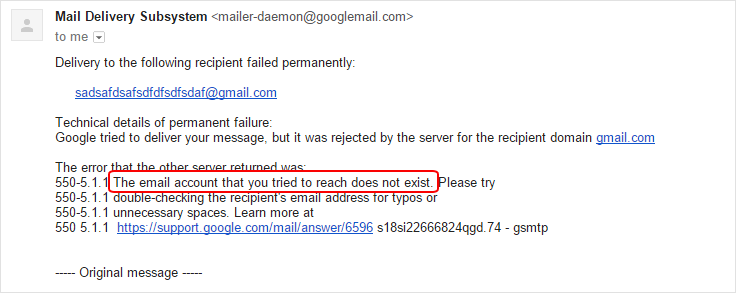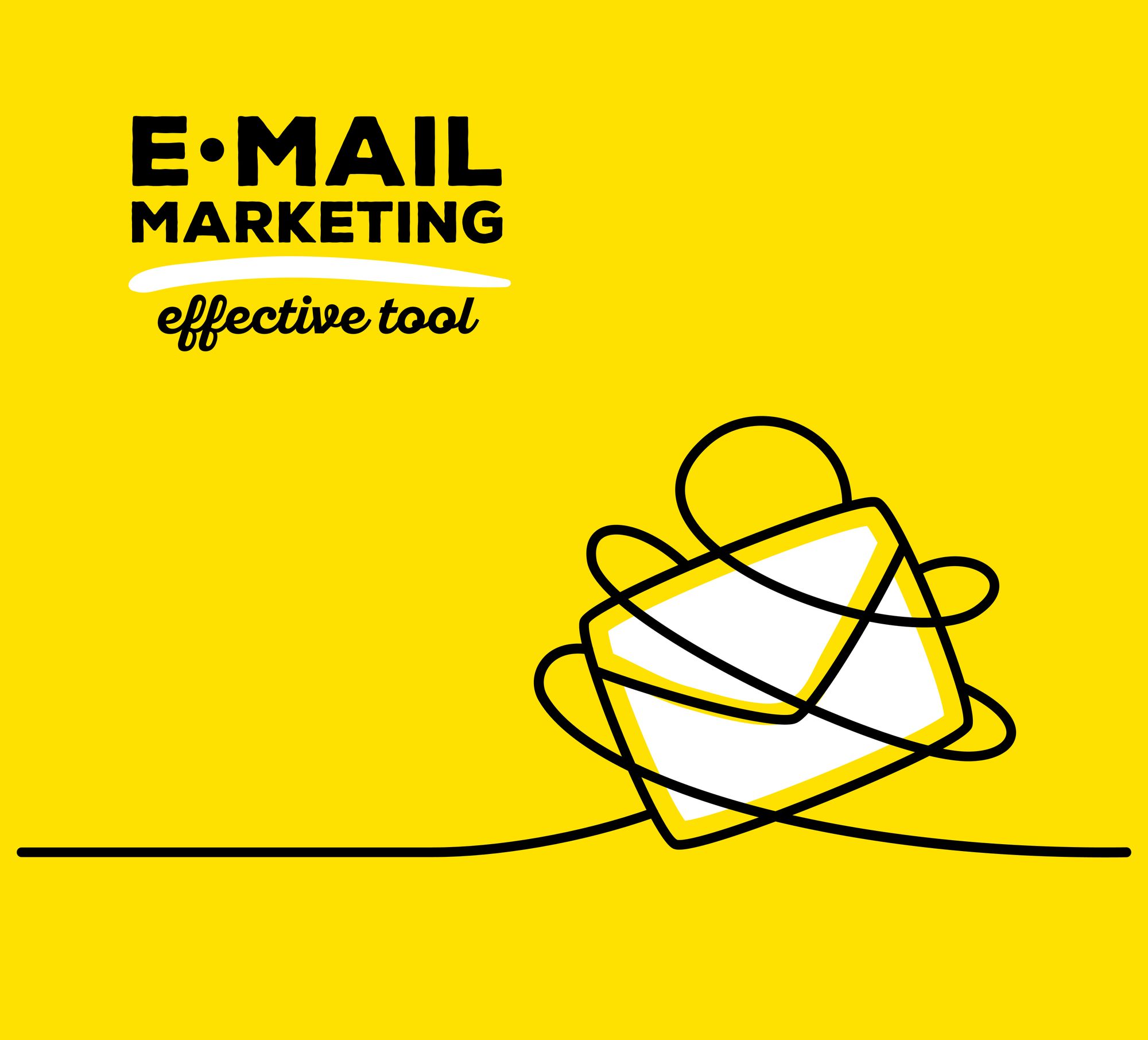Email marketing campaigns are an essential part of marketing your business in this digital age. Even in this high-tech era, however, frustrations aren’t completely eliminated and a significant obstacle you will encounter is the email bounce back. You want to get your marketing materials out to your customers and of the thousands of people who are part of your mail list, it’s likely that you find a sizable portion cannot be reached. There is no end to questions along the lines of “how to stop bounce back emails?” or “how to fix email bounce back?”

If you are facing these issues and have these questions, and it is very likely that you do, Bounceless is here to help you. Below, you will find some information on what an email bounce back is, what causes it and more importantly: methods that you can follow to reduce, even eliminate, email bounce backs.
What is ‘Email Bounce Back?’
An email bounce back is when the emails you send out cannot be successfully delivered to their intended recipients for whatever reason. The term ‘bounce back’ might not sound 100% like computer jargon and more like a kid’s playground games, it means exactly what it says.
The answer to the question “What is an Email Bounce Back Message?” is simple, too. An email bounce back message is the way that the sender’s email server notifies the sender that the email they sent has either not accepted and cannot accept the email or some other underlying issue has resulted in non delivery of the original email.
Some of the most common bounce back issues we hear of are cased of Gmail bouncing emails back to senders and emails bouncing back in Outlook. This is because Gmail and Outlook happen to be amongst the top email clients, but you must understand that email bounce backs happen across all email clients and are not limited to Gmail and Outlook.
Both Gmail bouncing emails back to senders and emails bouncing back in Outlook are not uncommon issues, and they are in no way unique problems that are different from other email clients. Any mail client in and of itself will likely never be the core reason for email deliverability issues.
Whatever your email client is, this guide will help you understand email bounce backs and answer the critical question “how to troubleshoot email bounce back?”
How Can I Indentify an Email Bounce Back Message?
An email bounce back message usually looks like the image below. As you can see, it states what issue has caused the bounce and also makes recommendations as to how you might go about fixing it.

You can always try the recommendations or if you know where you made the mistake that caused the bounce back, rectify it and then try sending an email again. Hopefully the second attempt will result in success.
The most common bounce back message you will receive is “Delivery to the following recipient failed permanently”. This happens in instances when:
- The email account you are trying to reach does not exist
- The email address types in could me misspelled or contain a typo
- Unnecessary spaces in the email address
There are two variations of Email Bounce Backs: hard bounces and soft bounces.
Knowing the differences between these hard bounces and soft bounces will help you understand how to fix email bounce back issues that arise in either Gmail, Outlook or the email client of choice.
Hard Bounces vs Soft Bounces
Hard bounces are instances where the email was rejected outright. Reasons for this occurring could be that your recipient’s email address does not exist any longer or that the email’s domain name isn’t available any more. It can also occur when you’ve entered a wrong email address. Hard bounces are usually permanent problems, as the email not existing or the server being shut down or the domain name no longer being available aren’t issues that are going to be fixed.
Soft bounces are not as serious as hard bounces. These are caused by some temporary issue, such as the recipient's mail server not responding or their inbox being filled to the brim. In such cases, you will receive an email from the server that your email wasn’t delivered and these emails often include the specific reason why they couldn’t be delivered. Soft bounces usually aren’t a major cause for worry and they should most likely be automatically fixed in time without any action from your part and you should be able to send the message again at a later time.

Why You Should Be Concerned About Email Bounce Backs?
All in all, it might seem like email bounce backs are not really an issue you need to be overly concerned about. However, a high number of consist bounce backs can actually hurt your email marketing campaign as it will affect both your IP reputation and your deliverability. Both of these measure how much of your email marketing campaign is actually received by your intended recipients without bounce backs, how many of them land in the Spam folder as opposed to the main inbox, how your recipients view your emails and so on.
You should also be aware that all companies that conduct email marketing campaigns are assigned a sender reputation score. The concept is similar to credit score. The more unwanted emails you send, the more emails that end up being bounced back… the more your sender reputation score will take a hit. Building your sender reputation score back up after it reduces significantly is not easy and having to do that will negatively impact your overall campaign and set it back.
You can also end up exceeding a benchmark set by Internet regulators to fight spam and unnecessary emails and even have your account suspended by your Email Service Provider.
Repeated sending of emails to unengaged email addressed will cause bounce backs, both hard and soft, and that will in turn affect your company’s email marketing campaign. You need to monitor your email marketing campaign with a keen eye and make changes where necessary, by scrubbing your email list, verifying email addresses and such, so that your campaign is as flawless and as effective as it can be.
A good place to start is to know the possible reasons as to why your emails might be bouncing back.
Possible Reasons For Email Bounce Backs
Before delving into the topic of how to stop bounce back emails, you need to know what might be causing it. As mentioned earlier, there are two types of bounce backs. Hard bounces and soft bounces, and whatever specific issue you are facing, it will fall in either one of these two categories.
1- Non-Extistent Email Addresses
The first possible reason is relatively straightforward. If the email that has been bounced back is marked as a “non-existent email address”, the email address you have on file for the intended recipient doesn’t exist. This would be categorized as a hard bounce.
This could be for several reasons. There could be a typo in the email address, the recipient could have left their organization (if the email domain is an organization’s) or in the worse case scenario, someone might have purposefully left an invalid email address. People tend to use fake email addresses to sign up for services or when something is offered in exchange for an email address.
You can recheck your original list of email addresses to see if there is a typo or find another means of contact with the intended recipient. Either way, repeatedly sending emails to a non-existent email address is not something you should be practicing.
2- Undeliverable Emails
Undeliverable emails usually fall into the “soft bounce” category. This means that usually the receiving email server is either not currently available or was overloaded. Temporarily unavailable servers have likely crashed or are under maintenance.
Overloaded servers are currently dealing with too many requests. In both of these cases, it simply means that it is a question of time before you send the email again.
It is worth noting that undeliverable emails can also fall under the “hard bounce” category when the email server couldn’t be found, usually in cases where the server has been shut down.
When your bounced back emails are marked as undeliverable, you should try sending the emails again after a period of time. However, if the email address bounces repeatedly, abandon the attempts as it is not worth taking a hit to your sender reputation.
3- Mailbox Full
It is possible that your intended recipient has a quota on their inbox – either a certain number of emails or a certain size. When this is the case, if the quota is filled, any emails they recieve will be bounced back until there is space for them.
This is a soft bounce issue, and trying again after a certain period of time will most likely sort this issue out. However, there are cases where it might mean the contact is no longer using that particular email address.
As with the case of a non-existent email address, if “mailbox full” bounces are recurring, you might want to get in contact with your contact by another way and check whether the address is valid or not.
4- Vacation/Auto-Reply
Another instance where emails could bounce are when your intended recipients are currently away or on vacation and they can’t check their email. In these cases, your emails to them will bounce and you will get an auto-reply that states that they are unable to access their emails currently.
This bounce fits in neither the hard or soft categories as a auto-reply still means that your email has been successfully delivered to the inbox.
Then why is this issue worthy of keeping an eye on? Sometimes an email address that is currently auto-replying could have abandoned and if a certain email address continues to bounce back with an auto-reply after a few months pass, you will need to consider removing the contact from your list.
5- Blocked Email
There could also be instances where a receiving server has blocked the incoming email and if that is the case, you will receive a bounce back message saying that the email has been blocked.
This could be an occurrence where the email address is associated with government entities, schools and the like. Servers in these places are very strict about both incoming and outgoing emails and it could be the reason why your emails are blocked and end up bouncing back.
To overcome this, you will need to get in touch with them and have them grant an exception for your email address so that your emails make it through to their servers.
6- Other Reasons
There are times when the reason for the bounce back isn’t one of the reasons categorized above. When there is no reason given, it could mean a number of things that are too technical to delve into, but in cases where you get a bounce back without a valid reason, you need to monitor the addresses to see if the bounces are a recurring issue, and if they are, take appropriate action.
Descresing Email Bounce Backs
We’ve looked at the possible reasons that might cause an email bounce back issue, so the next question is “how to troubleshoot email bounce back?”
It must be said that if you are conducting a large scale email marketing campaign, it is near impossible to completely eliminate email bounce back. Due to the number of emails that are part of the process and the fact that new email addresses will be addressed every day as you spread and expand, it is a futile effort to attempt to completely eradicate email bounce backs.
However, you can reduce email bounce backs vastly.
Before delving into that, we will take a quick look at a couple of other things you need to know.
- How to calculate email bounce rate?
- What is an acceptable email bounce rate?
Knowing the answers to these two questions will allow you to have some perspective into the breadth of success that your email marketing campaign is having and will allow you to follow through on plans to reduce your email bounce rate.
How to Calculate Email Bounce Rate?
Calculating email bounce rates aren’t too hard. Your bounce rate is the number of emails that have bounce backed as a percentage of total emails you have sent.
-
Divide the total number of emails sent by total number of bounces. This is your bounces per email.
-
Multiply that number by 100 and you have your bounce rate expressed as a percentage of your total emails.
For example, if you sent 1500 emails and 250 of them bounced, the calculation will look like this:
250/1500=0.166666667
That is, 0.167 emails bounced for every email you sent. Multiply that by 100:
0.166666667*100=16.6666667
That means that you have a 16% bounce rate.
Now that you’ve calculated your bounce rates, the next question is “is it an acceptable bounce rate?”
What is an Acceptable Bounce Rate?
We used a hypothetical number for our calculations and obviously your numbers would be different, however, if your percentage is also 16%, it is unfortunate. 16% is not necessarily an acceptable bounce rate.
According to Epsilon’s Email Trends and Benchmark guide (2010), 16% falls just over the average bounce rate for commercial emails. Depending on the industry, the average bounce rates are anywhere between 2% and 15%.
Ideally, however, you want your bounce rates below 10%.
So, how do you get your email bounce rate to those acceptable boundaries?
There are obvious methods to consider and get of the way. If your list of contacts is old, it is quite likely that a number of email addresses in the list are invalid now. You need to clean your email list and we at Bounceless are here to help you with such matters, but the best place to start fine tuning your marketing campaign to reduce bounce rates is by implementing some of the methods below into your own processes before you reach out for professional help.

Methods to Decrease Email Bounce Back
1- A Good Sign-Up Form
Sending email to your contacts will be a difficult feat to achieve without first having contacts. So, you need a sign-up form to gather contacts. It would be ideal if the sign-up form was a web-based form as it would prevent human error on your part when you input the handwritten email addresses to your list. You can avoid typos from the get go, which is an excellent place to start.
By making sure that your sign-up form is well designed, you’ll have an excellent place to gather contacts for your email lists. The key to decreasing bounce backs that you can implement in the sign-up form is having a solid captcha system that will prevent the inevitable host of bots that sign up to each and every service they come across in the internet.
2- Double Opt-In
You absolutely need to be using the double opt-in if you already aren’t.
Whereas the single opt-in method is as simple and straightforward as someone entering their email address and submitting, and the form adding their details to your contacts list, the double opt-in has one additional step.
After they enter their email address and other details and submitting, they will receive a confirmation in their email with a link that they need to click before they are added to your mailing list. This extra step ensures that only valid emails are accepted by having your customer engage a second time by confirming their email address.
3- Update Information
It goes without saying that you should keep your contact information updated, and one way you could do that is by correcting obvious spelling errors and reducing generic email addresses like noreply@email.com or info@website.com.
However, what we mean by update information is that you should include a method that allows your customers to update their information or verify that their information is all up to date and correct. This could be included in the emails you send and this also allows you to be one step ahead of a potential bounce by changing the email address if and when it becomes invalid.
4- Email Formatting
This might not sound immediately obvious, but you need to make sure email doesn’t look spam. Spam filters are put in place and used by all email servers to prevent spam and provide a better user experience.
The problem is that spammers are constantly evolving and changing their tactics to be in line with non-spam emails, and you need to make sure that your email doesn’t end up being recognized as spam by the email servers that you send your emails to.
Tools such as mail-tester.com, isnotspam.com and email-checker.net exist to help you figure out whether your current email marketing campaign materials are similar to spam. If it isn’t, great. However, if it is, you can change it so that you don’t get caught in the spam filters and miss out on a potential customer.
5- Schedule Your Mail
Something else that you could do to help your email marketing campaign and prevent bounce backs is to stick to a consistent mailing schedule. By having a schedule, and sending emails based on engagement patterns by your customers, you both have a roadmap for your own campaign and your emails are expected by both your customers and their mail servers. This will go great lengths towards reducing email bounce back issues.
If you follow all of the steps mentioned above, you will build up a solid account and sender reputation, which as we discussed earlier, are both important factors. Having a good account reputation, sender reputation and deliverability score will boost your email marketing campaign and allow you to grow.
These are all steps that you can take and should take to reduce your bounce back rate, but there are services that exist for the sole purpose of making the whole process, from the start to the end, easier for you.

Email List Cleaning Services
We’ve looked at a number of methods that will help you fix bounce back issues you might have and reduce their impact on your email marketing campaign. But there are more methods you can take, and that is hiring an email list cleaning service. An email list company can sometimes be the simplest and the best answer to the question “how to fix email bounce back?”
What Is An Email List Cleaner?
An Email List Cleaner is a service that provides a crucial service to internet marketers. It goes through your potentially thousands of contacts, finds contacts who might cause bounce backs for the reasons we listed above and removes them from your email list.
Invalid names, emails with typos in them, nonexistent email addresses – everything will be thoroughly scanned and deleted. In cases where you might be able to take actions to fix it yourself (like fixing typos and choosing whether or not to see if a contact on vacation engages), the list cleaner will mark the relevant emails.
If you are conducting an Email Marketing Campaigns of your own, after implementing the methods listed above, the next best way to ensure you have a high deliverability rate, along with low email bounce rates, is retaining the services of an Email List Cleaner. Email list cleaners can save you both time and your hard earned money.
Bounceless is one such Email List Cleaner.
Bounceless.io
The most common way to ensure you do not face such messages is to clean your email list thoroughly and often. Cleaning your email list allows you to remove dead emails from your sending list and ensures higher email delivery rates. We have designed Bounceless to make this process and simple and straightforward as possible for you.
As our name suggests, our aim is to make sure there are no bounces on your emails. By using the specific techniques such as Spamtraps, Risk Validation, SMTP Validation, MTA Validation and Syntax Verifiers and more, we provide a thorough service that will do all your email list cleaning work for you.
We at Bounceless know the importance of your sender reputation score, your IP reputation and your deliverability score. By closely monitoring your bounce rates and giving you a host of tools to deal with any issues you might face, we help you protect your email marketing campaign against the limits set by internet regulators for bounces, spam complaints and unsubscribe requests.
Bouncelessis also designed to integrate with any of the major email marketing tools, we allow you to keep your workflow organized and smooth.
With competitive pricing and advanced email list cleaning techniques, we provide you with the best value for money and the biggest return on investment.

